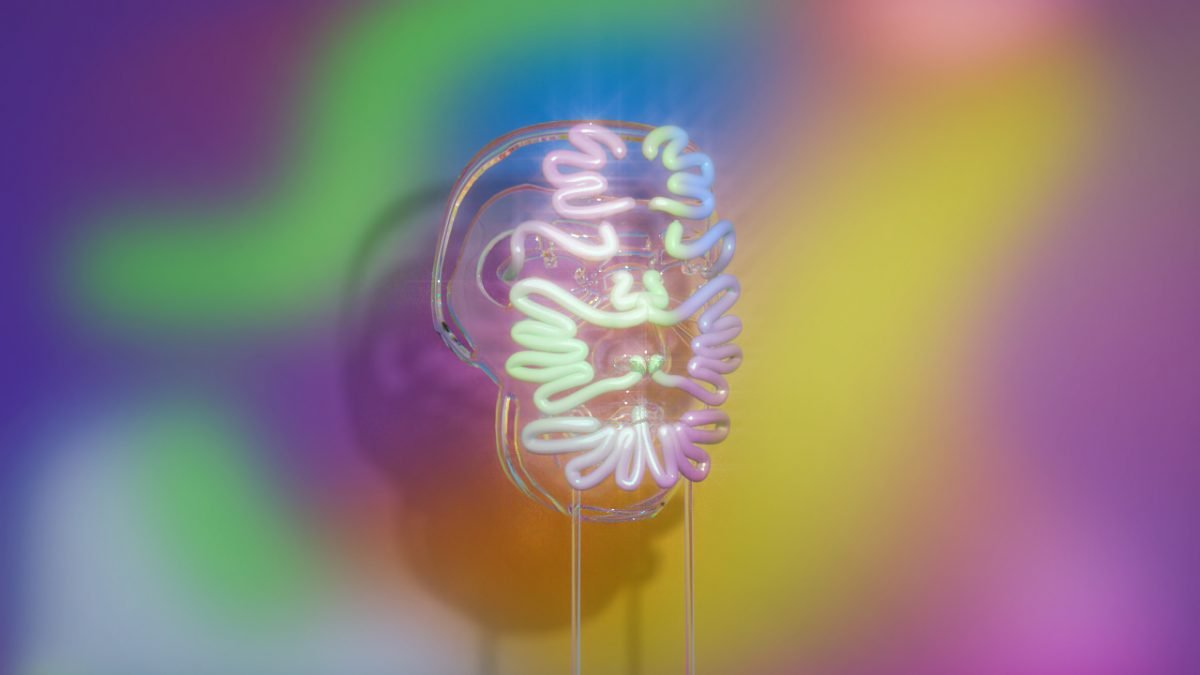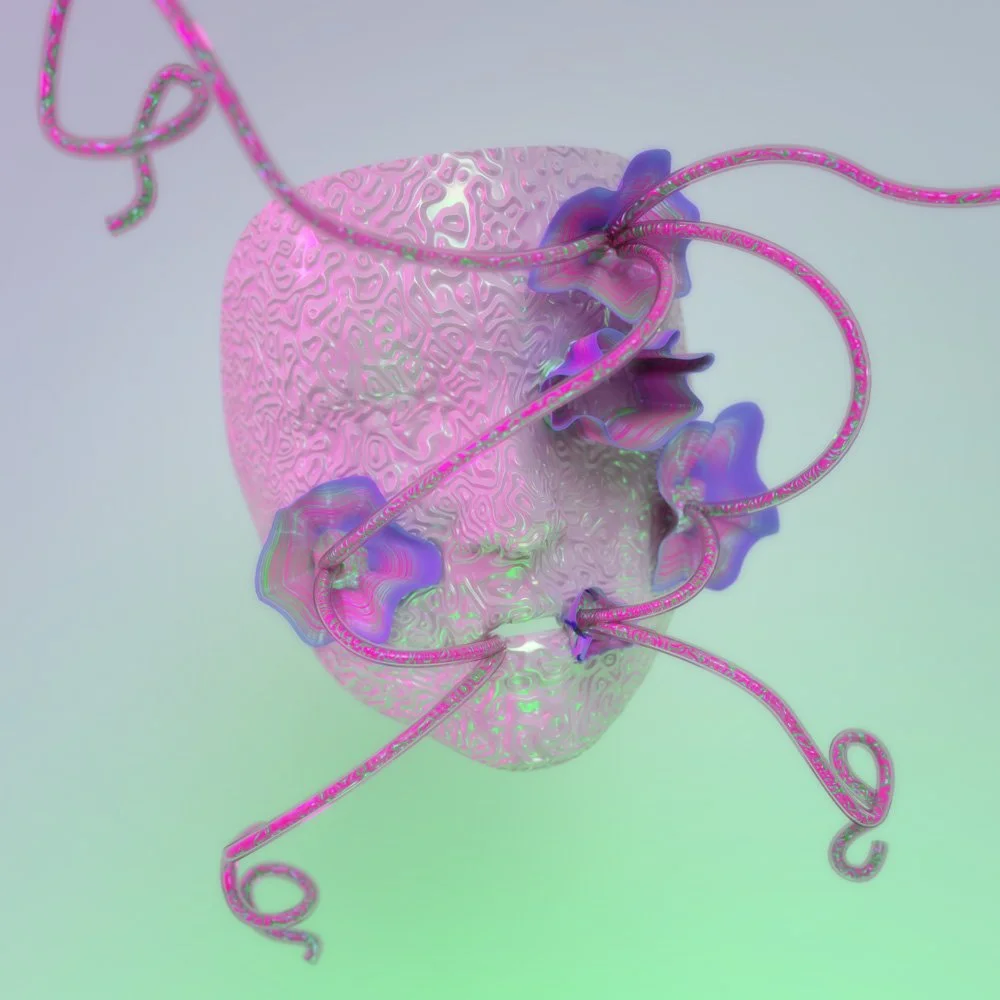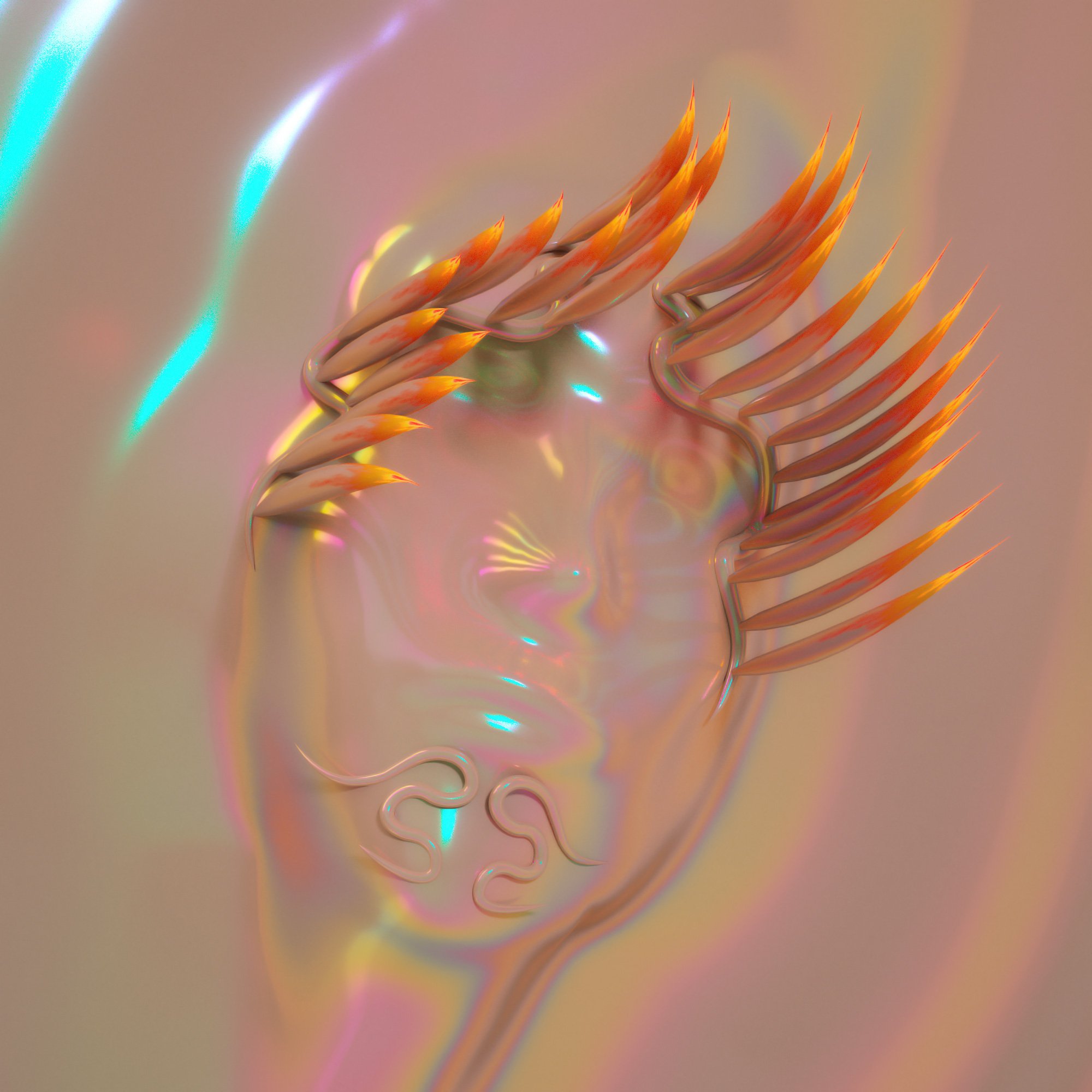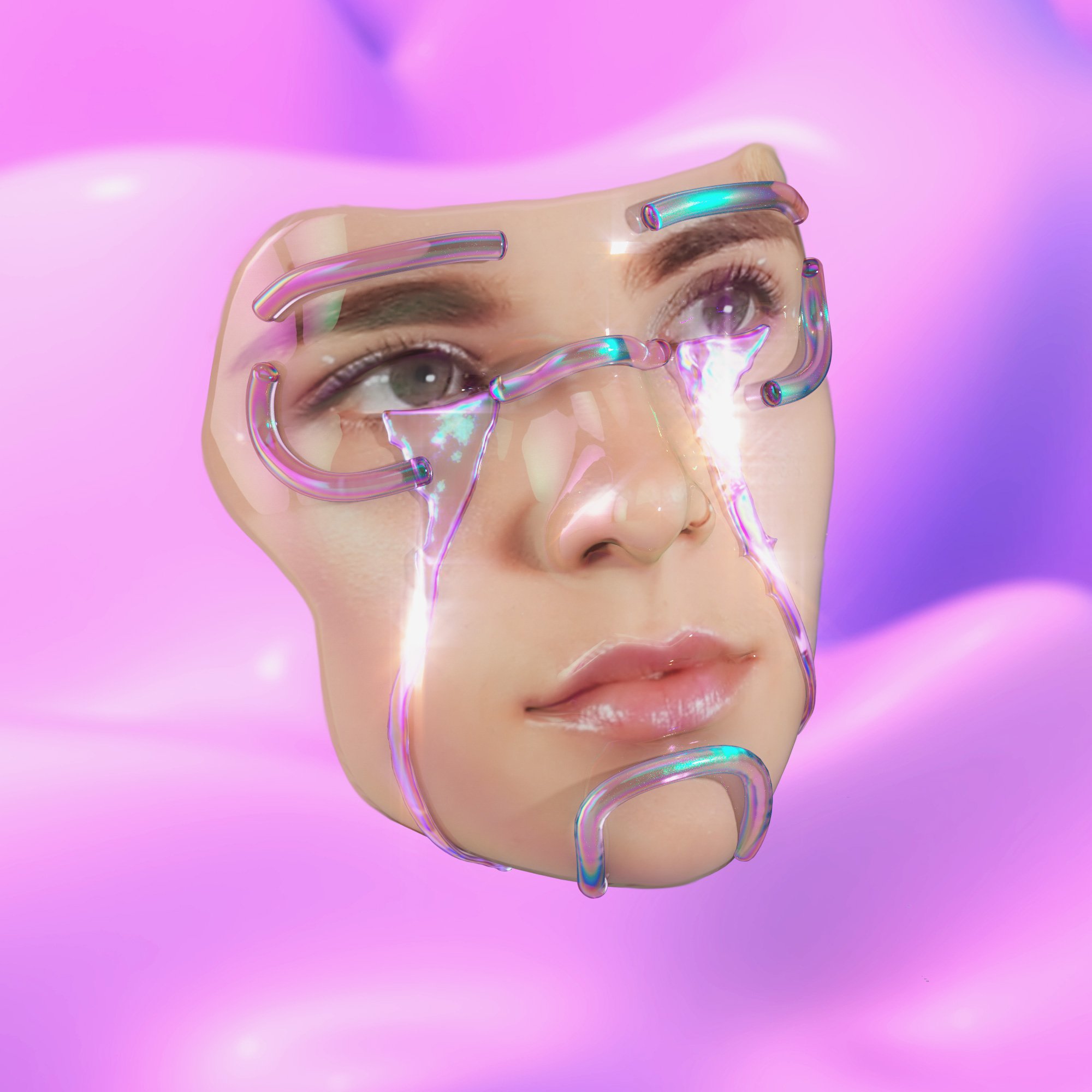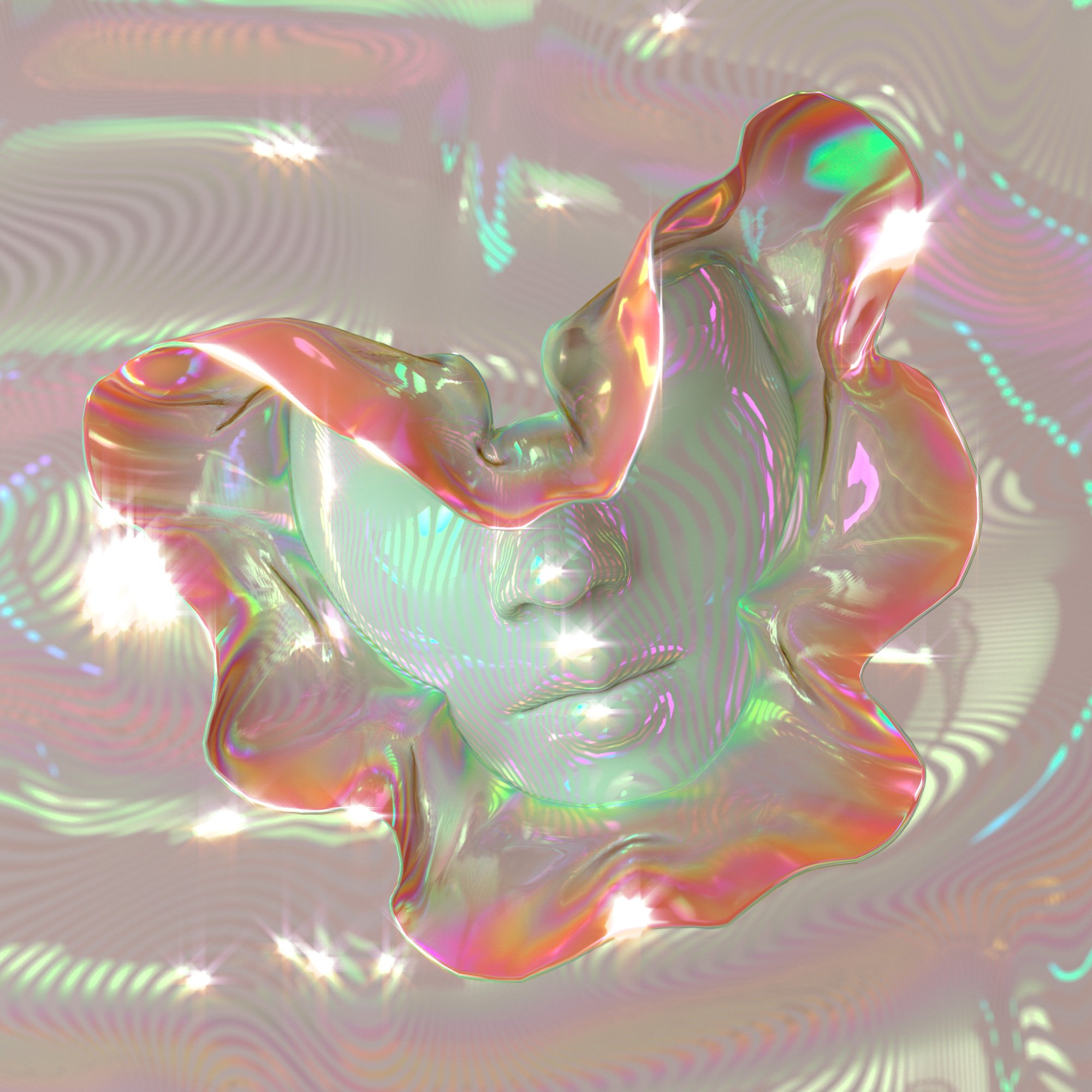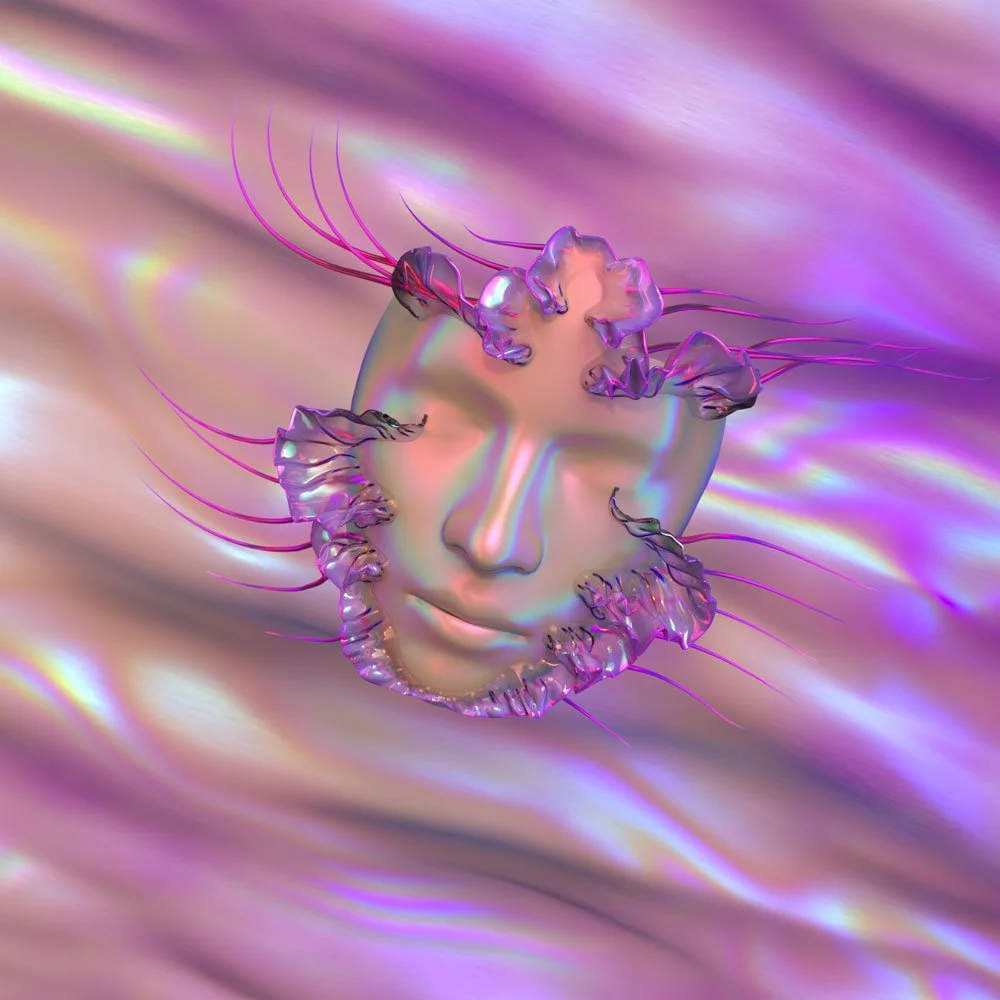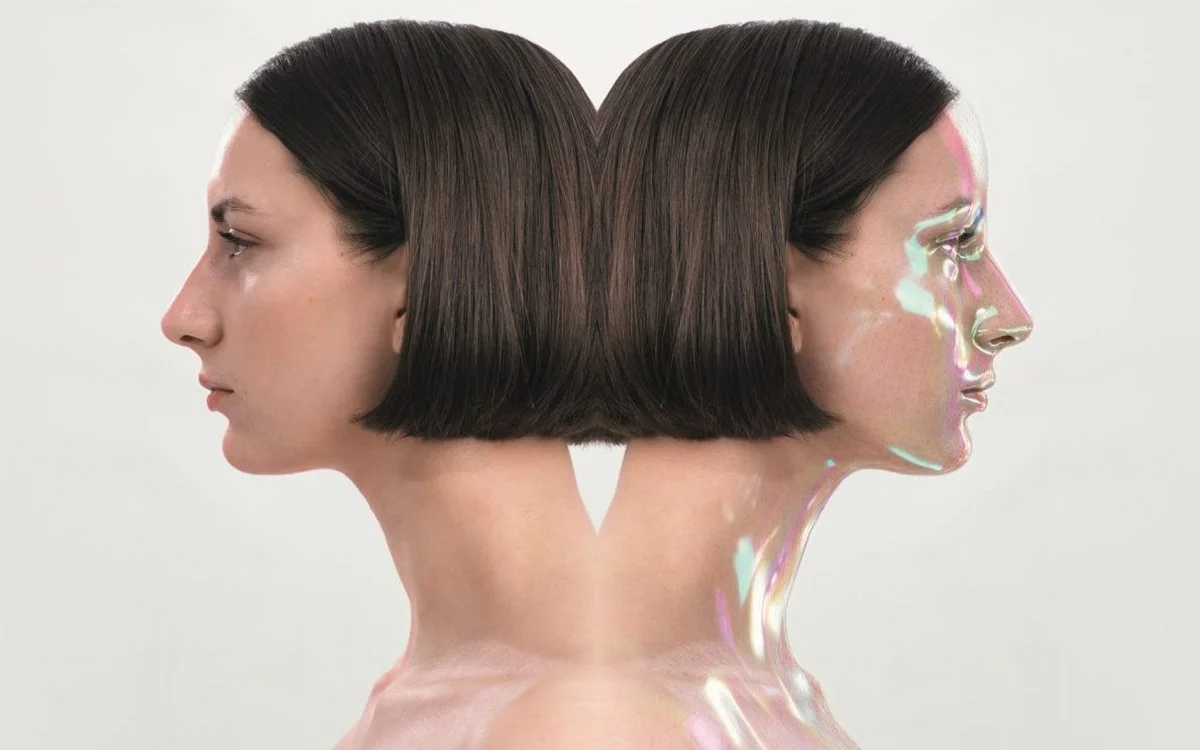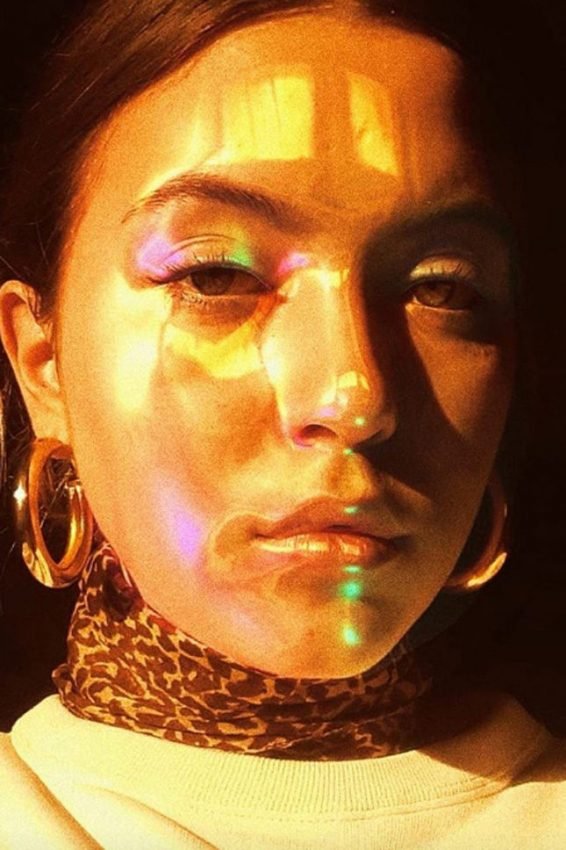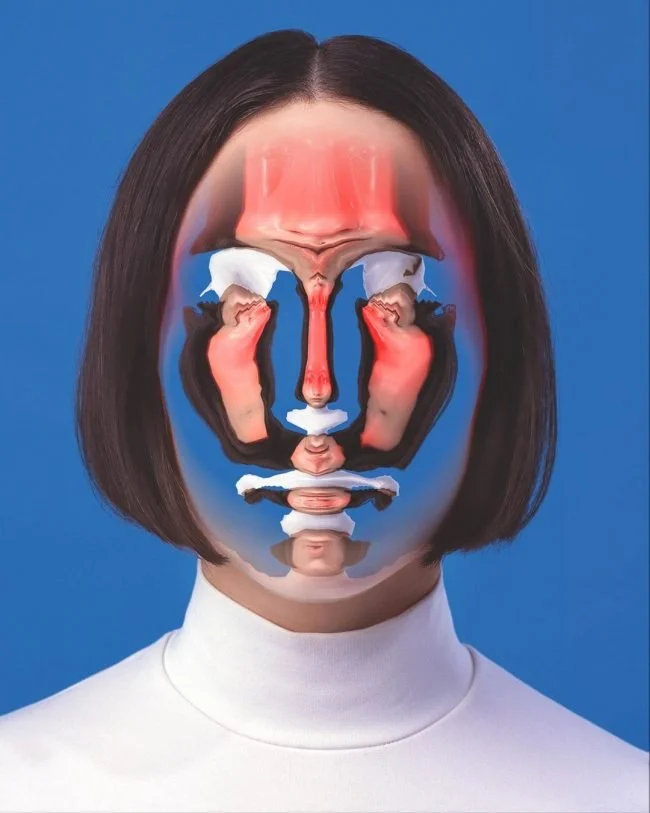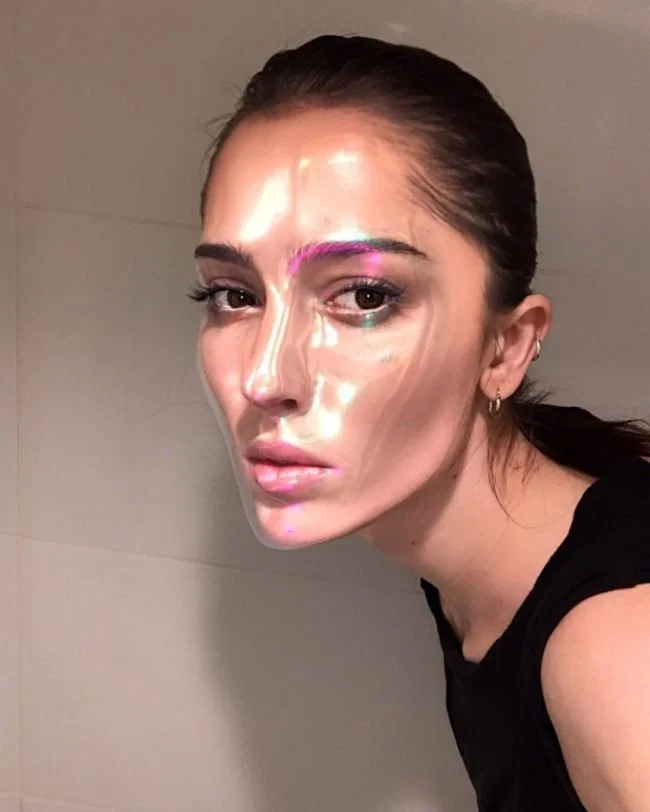How The Fantastical, Futuristic Art of AR Face Filters Is Subverting Traditional Notions of Beauty
Reality-bending AR lenses imagined by a new generation of designers are redefining our relationships with our digital selves
Alpha ‘Twin Kinds’ still
In Ines Alpha’s world, everyday faces turn into futuristic landscapes. Through a mere swipe, the face filters imagined by the self-styled ‘3D makeup artist’ zaps us into a fantastical future, one where quivering, translucent fins sprout out of cheekbones, and curling lines of liquid metal sketch looping patterns on bare skin. “I’ve always been drawn to making reality seem more fantastic than it is,” says Alpha.
Moving past the earlier wave of dog faces and exaggerated physical features—doe eyes, plump lips—Alpha is part of a new generation of digital designers whose surreal creations are not only remapping our relationship with social media, but also changing our perception of identity and beauty. Their fantastical experiments hint at their radically different ideas about the scope of AR filters—while shifting the focus to notions of identity and self-expression, they’re simultaneously redefining beauty in both the digital and the physical realm.
Alpha first started experimenting with 3D while working at an advertising agency as an art director, specializing in beauty, luxury, and fashion. Alongside working on HD mockups of cosmetic still lives, she also started collaborating with musician Panteros666 to create bizarre and enchanted worlds for his music videos, by adding “iridescent blobs and weird creatures to physical landscapes.” Soon after, the blobs morphed into gills, fins, and tendrils that grew out of human faces. “It’s the kind of thing a robot might wear to the Met Gala in the year 3052,” reviewed Lil Miquela—Instagram’s favorite virtual influencer—echoing Alpha’s own thoughts. “By combining 3D art and makeup, which are two of my favorite things in the world, I was accidentally creating makeup from the future,” she says.
“It’s the kind of thing a robot might wear to the Met Gala in the year 3052.”
While Ines’ foray into AR filters was spurred by her love of makeup, designer Johanna Jaskowska dived into the world of augmented lenses specifically to find a new definition of this distinctly postmodern aesthetic. “The kind of futurism that we are talking about has already existed for a decade, especially in movies like Blade Runner,” says Jaskowska. “However, that vision has always been very masculine. I wanted my work to imagine a fresh and feminine version of it.” Over the course of only a couple of weeks, Jaskowska shot to Instagram fame with her filters Beauty3000 and Zoufriya, which enveloped thousands of faces in a prismatic sheen, almost as if soaked in virtual vats of sticky glycerine. Even Cardi B couldn’t resist a dip.
For a digital product that’s currently holding humanity’s collective attention, the complex creative processes that lead to these reality-bending filters is not widely known. For a long time, only in-house developers at Snapchat and Instagram could experiment with the medium. That changed in 2017, when Snapchat and Facebook opened up its individual AR software, allowing everyone to tinker with the latest technology and create their own filters. When digital artist Aaron Jablonski discovered Lens Studio, Snapchat’s AR platform, he applied to the program and became one of its official lens creators. “It sparked my interest in filter-specific AR experiences, but I wanted to create an alternative to the typical beauty masks and dog faces that were already out there,” says Jablonski. “I got most of my software and programming skills by watching online tutorials and testing them out, which called for a lot of trial and error.”
Johanna Jaskowska’s Beauty 3000 filter
When testing the waters with experimental softwares, the trick, it seems, is to keep things simple. “The workflow depends on what you want to do, so I try to keep mine as basic as possible,” says Alpha. The creative process starts with 3D modeling on softwares like Blender, ZBrush, or Cinema 4D. Each software is known to have its own characteristics: “ZBrush is great if you want to sculpt a shape from scratch, while Cinema 4D is my go-to animation software,” says Alpha. Since phone filters can only function in small file sizes, to work in real-time, the models need to be optimized to be no more than 20MB, (the equivalent of 4 MP3s). After that, designers import the model or animation to an AR filter software like Spark AR or Lens studio, where designers can tweak and finetune animations, interactivity, textures, and shadows.
“55% of surgeons reported seeing patients who asked for a surgery that would make them look better in selfies, often citing their ‘Instagram faces’ as a preferable starting point.”
In theory, using these new tools to create filters that digitally augment our faces and bodies offers up the freedom to turn ourselves into anything imaginable, transcending both physical and mental constraints of how we should look. Yet instead of shrugging off the conformist ideas of ‘perfectionist beauty,’ the more mainstream AR lenses have, ironically, tended to play to its worst predilections, and underscore our problematic relationship with beauty. A 2017 survey from American Academy of Facial Plastic and Reconstructive Surgery found that 55% of surgeons reported seeing patients who asked for a surgery that would make them look better in selfies, often citing their ‘Instagram faces’ with flawless skin and huge eyes as a preferable starting point. Studies show that popular applications in China allow phones to apply a filter directly through the camera, allowing the user to see their ‘enhanced self’ every time they take a selfie.
“Not long ago, I realized how social networks—instead of championing a newly found sense of freedom of self expression—maintain the antiquated status quo around beauty: manicured brows, doe-eyes, no wrinkles, clear skin and so on,” says Alpha. In contrast, the latest leaps of imagination in AR filters are about transformation and fun—more aquatic alien than Kim Kardashian. “I think people are getting bored of seeking perfection,” says Jablonski. “It’s becoming increasingly important for many of us to embrace individualism and weirdness.”
The future is ever-morphing, continuously being shaped by experimental technology that evolves at warp speed. Designing the interfaces and experiences that shape future worlds means always having to look at the bigger picture, says digital designer and futurist Cennydd Bowles. “No matter which field of design we are engaged with, it’s important to consider not just how the technology impacts the user, but also what effects it might have on non-users, wider society, and even other life on earth,” he says.
That we are designing the future to be slicker and faster is old news, but can we also temper its quotient for empathy and inclusivity? “We’re evermore connected, living in ultra HD, with the paradoxical downside of a pervasive, crippling feeling of isolation,” says Alpha.“ As the designers of the day, the most important thing is to stay focused on how our work can empower people.”
This story was originally published on Eye on Design as a part of an ongoing series about UX design in partnership with Adobe XD, the collaboration platform that helps teams create designs for websites, mobile apps, and more.
